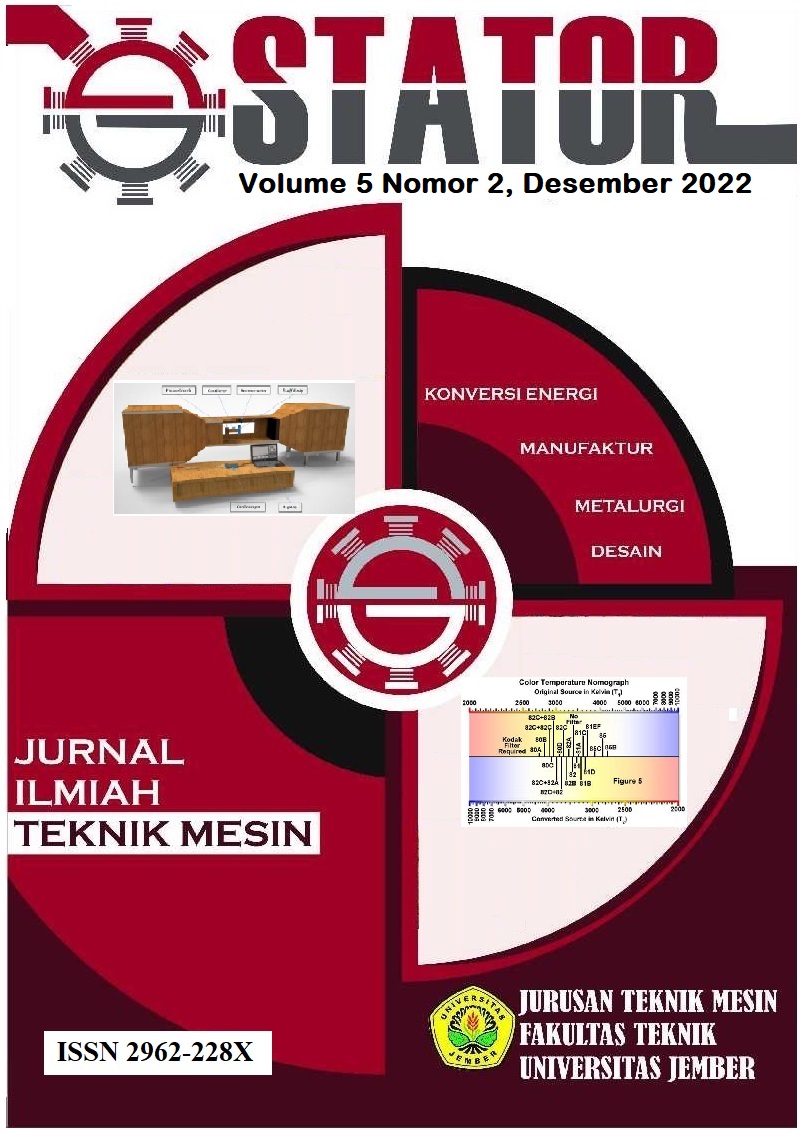analisis pengaruh jumlah sudu terhadap unjuk kerja blower sentrifugal type back ward dengan honeycomb dan tanpa honeycom
Keywords:
centrifugal, Number of blade, HoneycombAbstract
Centrifugal blowers are machines or tools that are used to increase gas pressure or suction with a final pressure not exceeding 2000 Pa. The impeller blade is the most important part of the centrifugal blower which influences the performance of the blower. The rotation of the electric motor that is connected directly to the impeller is something that can affect the performance of the blower. Honeycomb is a component that is used to obtain fluid flow that is in the same direction, uniform, and stable. This study observed the effect of the number of blades on the performance of backward type centrifugal blowers using honeycomb and without the honeycomb. Variations used are the number of blades 13 and 15 using honeycomb and without the honeycomb. Tests were carried out at 400 rpm, 500 rpm, 600 rpm, and 700 rpm. From the results of the study, it was found that the fewer the number of blades, the higher the performance of the blower. Giving honeycomb at the output blower produces a more fluid or even fluid flow. In blade 15 the data distribution value is closer to the average value indicated by a smaller standard deviation value. This is due to the design of the blade impeller between the blades more tightly so that the air produced will be more tightly or evenly distributed, but has a lower wind speed.


